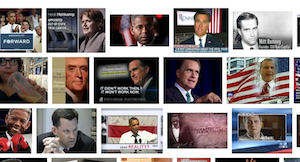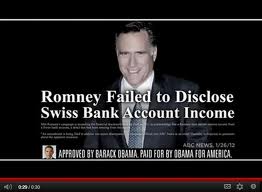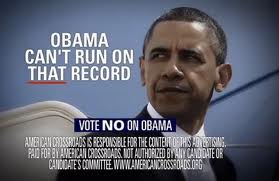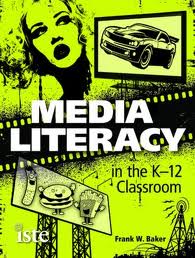Media Literacy, Politics, and Students
What Students Should Know About Campaigns & the Media
For many years, I have been interested in the way the media reports on the presidential campaign and the way the candidates manipulate the media. Three years ago I wrote a book about the role of media in the political process.
Many people will say that this year’s campaign has turned negative, and they’d be correct. Negativity in campaigns has been a staple throughout our history as this recent news feature reminds us.
But negative ads have a purpose: they’re designed to get our attention and they provide candidates with opportunities not only to make charges and allegations but also to plant doubts in the minds of the potential voter.

Understanding political advertising and the media management tactics of candidates is an important element of effective citizenship. The Center For Civic Education recommends that “students should be able to evaluate, take, and defend positions, on the influence of the media on American political life.” Media literacy is necessary to achieve this goal.
I want students — our future voters, taxpayers, and civic leaders — to understand how political messages are crafted, so that they can see through the spin of the 30-second campaign commercial.
What students need to know
Here are some “givens” that students should know and acknowledge are facts.
Candidates need the media. Reaching voters means more than sending brochures by mail, or creating billboards and bumper stickers. Candidates know that millions of people (still) watch television despite the rise of social media. So they create photo-ops, hold news conferences, attend fairs and parades, all just to make sure the media will capture their every move and keep them in the public eye.

Sometimes, things don’t go as planned and the wrong image is conveyed. Mitt Romney made a speech inside a vast football stadium in Detroit — empty except for a few hundred folks there to witness the talk. Some said this looked silly and they might be right. Earlier, President Obama was photographed shirtless — a photo that the chief executive wished had not been published, but it was. There’s a new word for all of this: it’s called poli-optics, coined by the man who was in charge of President Clinton’s appearances.
Candidates depend on media consultants. It is the consultant who is constantly working on the message, the visuals, and the messenger. Media consultants often come out of the advertising and broadcasting businesses, so they know how to make the most of the product (the candidate). They also know how to appeal to various audiences, so messages will be targeted to a specific demographic sure to be watching, listening, surfing and hopefully paying attention.
Candidates raise millions of dollars for one major purpose: to purchase ad time on broadcast TV stations. Media literacy helps us understand that media are businesses, and during the year or so leading up to a presidential election, TV station bottom lines get fatter as campaigns gobble up airtime.

Political ads (produced by the candidates) are considered “free speech.” They cannot be censored. In fact, candidates can and will say anything in an ad (even deceptive statements and outright lies). TV stations cannot refuse to air them. (The same is not true of the so-called “Super PAC” supported ads, but TV stations don’t have the research staffs to investigate every charge. Fact-checking organizations are now offering this service.)
New media have already proven themselves to be important and necessary communication tools to reach voters. Facebook, Twitter and other social networking venues are also being used to fundraise. The candidate whose staff is not proficient in new media will be left far behind. (If you watch the conventions and debates, you’ll see the frequent and creative ways social media is being used in the political world today.)
Begin with the basics
These basic media literacy questions are effective in getting young people to think critically about the content and techniques used in advertising, including political ads.

2. Who is the audience for the ad?
3. What is the purpose of the ad?
4. What techniques are used to make the message believable?
5. Who or what might be omitted and why?
6. How might people, different from me, understand this message differently?
7. Who benefits from, or makes money from, this message?
8. How can I verify the information contained in the ad?
9. What will you do with the information?
If I have piqued your curiosity, and you want to know more, I recommend you surf over to The Media Literacy Clearinghouse (my website) and the page on The Role of The Media In Politics. It contains hundreds of additional ideas and resources to help you get started or refine that lesson you’re already teaching.
Frank W. Baker is the author of three books; his most recent is Media Literacy In The K-12 Classroom (ISTE, 2012). Baker maintains the nationally recognized Media Literacy Clearinghouse website and is a consultant to the National Council of Teachers of English (NCTE). He conducts media literacy workshops at schools and districts across the US.





































3 Responses
[…] Future voters and civic leaders need to understand how political messages are crafted so that they can see through the spin, says media literacy expert Frank Baker. […]
[…] Media Literacy & Politics: What Every Student Needs To Know […]
[…] Campaign Advertising: The Image Is Everything Media-Visual Literacy and Presidential Politics Campaign Ads: Helping Students Find The Truth Media Literacy, Politics and Students […]